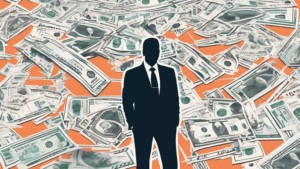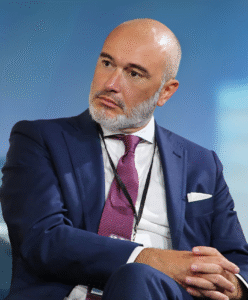
Why Skills-First Leadership Is Replacing the Ivy League Playbook in the C-Suite
The old prestige pyramid—where Ivy League degrees and blue-chip consulting backgrounds paved the way to the CEO seat—is cracking.

The United States has again faced a widening budget deficit, reaching a staggering $1.8 trillion for the fiscal year 2024. This marks a significant increase from the previous year and represents the third-largest deficit in U.S. history, surpassed only by the pandemic-era deficits of 2020 and 2021.
A primary driver of the increased deficit is the soaring cost of interest payments on the national debt. For the first time ever, interest payments exceeded $1 trillion in 2024, reflecting the rising interest rates on government bonds. This substantial increase in interest expenses has put further strain on the federal budget.
Other contributing factors to the deficit include increased spending on Social Security, healthcare programs, and the military. These mandatory spending programs have grown steadily over time, outpacing increases in tax revenues.
The widening budget deficit raises concerns about the long-term sustainability of the U.S. fiscal position. The national debt, the cumulative total of past deficits, continues to grow alarmingly. If left unchecked, the rising debt burden could negatively affect the economy, including higher interest rates, reduced economic growth, and increased pressure on future generations.
Addressing the budget deficit will require difficult choices and a combination of strategies. Policymakers may need to consider measures such as reducing spending, increasing taxes, or reforming entitlement programs. However, finding a consensus on these issues can be challenging, involving competing priorities and political interests.
The growing budget deficit is a pressing issue that demands attention from policymakers and the public alike. Failure to address this challenge could have significant consequences for the U.S. economy and the well-being of future generations.

The old prestige pyramid—where Ivy League degrees and blue-chip consulting backgrounds paved the way to the CEO seat—is cracking.

Loud leaders once ruled the boardroom. Charisma was currency. Big talk drove big valuations.

But the CEOs who make history in downturns aren’t the ones with the deepest cuts

Companies invest millions in leadership development, yet many of their best executives leave within a few years. Why?

The most successful business leaders don’t just identify gaps in the market; they anticipate future needs before anyone else.

With technological advancements, shifting consumer expectations, and global interconnectedness, the role of business leaders

Following a distinguished Law Enforcement career Joe McGee founded The Securitatem Group to provide contemporary global operational specialist security and specialist security training products and services for private clients, corporate organisations, and Government bodies. They deliver a wide range of services, including complete end-to-end protection packages, close protection, residential security, protection drivers, and online and physical installations. They provide covert and overt investigations and specialist surveillance services with a Broad range of weapons and tactical-based training, including conflict management, risk and threat management, tactical training, tactical medicine, and command and control training.

Jay Wright, CEO and Co-Owner of Virgin Wines infectious energy, enthusiasm, passion and drive has been instrumental in creating an environment that encourages talent to thrive and a culture that puts the customer at the very heart of every decision-making process.

Fabio de Concilio is the visionary CEO & Chairman of the Board at Farmacosmo, a leading organization dedicated to mental health and community support services. With a deep commitment to identifying and meeting customer needs, Fabio ensures that high standards are maintained across the board.

Character Determines Destiny – so said Aristotle. And David CM Carter believes that more than anything else. For David, it has been numerous years of research into codifying Entelechy Academy’s 54 character qualities that underpin everything he stands for as a leader and teacher.


Leave us a message
Subscribe
Fill the form our team will contact you
Advertise with us
Fill the form our team will contact you